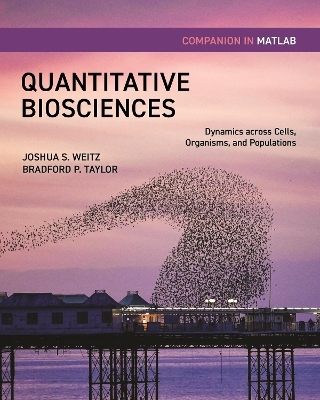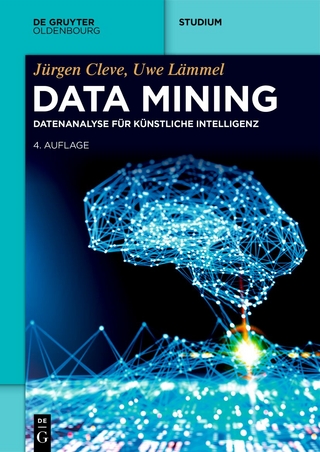
Quantitative Biosciences Companion in MATLAB
Dynamics across Cells, Organisms, and Populations
Seiten
2024
Princeton University Press (Verlag)
978-0-691-25568-2 (ISBN)
Princeton University Press (Verlag)
978-0-691-25568-2 (ISBN)
A hands-on lab guide in the MATLAB programming language that enables students in the life sciences to reason quantitatively about living systems across scales
This lab guide accompanies the textbook Quantitative Biosciences, providing students with the skills they need to translate biological principles and mathematical concepts into computational models of living systems. This hands-on guide uses a case study approach organized around central questions in the life sciences, introducing landmark advances in the field while teaching students—whether from the life sciences, physics, computational sciences, engineering, or mathematics—how to reason quantitatively in the face of uncertainty.
Draws on real-world case studies in molecular and cellular biosciences, organismal behavior and physiology, and populations and ecological communities
Encourages good coding practices, clear and understandable modeling, and accessible presentation of results
Helps students to develop a diverse repertoire of simulation approaches, enabling them to model at the appropriate scale
Builds practical expertise in a range of methods, including sampling from probability distributions, stochastic branching processes, continuous time modeling, Markov chains, bifurcation analysis, partial differential equations, and agent-based simulations
Bridges the gap between the classroom and research discovery, helping students to think independently, troubleshoot and resolve problems, and embark on research of their own
Stand-alone computational lab guides for Quantitative Biosciences also available in Python and R
This lab guide accompanies the textbook Quantitative Biosciences, providing students with the skills they need to translate biological principles and mathematical concepts into computational models of living systems. This hands-on guide uses a case study approach organized around central questions in the life sciences, introducing landmark advances in the field while teaching students—whether from the life sciences, physics, computational sciences, engineering, or mathematics—how to reason quantitatively in the face of uncertainty.
Draws on real-world case studies in molecular and cellular biosciences, organismal behavior and physiology, and populations and ecological communities
Encourages good coding practices, clear and understandable modeling, and accessible presentation of results
Helps students to develop a diverse repertoire of simulation approaches, enabling them to model at the appropriate scale
Builds practical expertise in a range of methods, including sampling from probability distributions, stochastic branching processes, continuous time modeling, Markov chains, bifurcation analysis, partial differential equations, and agent-based simulations
Bridges the gap between the classroom and research discovery, helping students to think independently, troubleshoot and resolve problems, and embark on research of their own
Stand-alone computational lab guides for Quantitative Biosciences also available in Python and R
Joshua S. Weitz is professor and the Clark Leadership Chair in Data Analytics in the Department of Biology at the University of Maryland. Previously, he held the Tom and Marie Patton Chair in Biological Sciences at the Georgia Institute of Technology, where he founded the Interdisciplinary Graduate Program in Quantitative Biosciences. He is the author of Quantitative Viral Ecology (Princeton). Bradford P. Taylor is a research associate in the T. H. Chan School of Public Health at Harvard University.
| Erscheinungsdatum | 06.02.2024 |
|---|---|
| Zusatzinfo | 124 b/w illus. |
| Verlagsort | New Jersey |
| Sprache | englisch |
| Maße | 203 x 254 mm |
| Themenwelt | Informatik ► Datenbanken ► Data Warehouse / Data Mining |
| Mathematik / Informatik ► Informatik ► Theorie / Studium | |
| Mathematik / Informatik ► Mathematik ► Computerprogramme / Computeralgebra | |
| Naturwissenschaften ► Biologie | |
| ISBN-10 | 0-691-25568-7 / 0691255687 |
| ISBN-13 | 978-0-691-25568-2 / 9780691255682 |
| Zustand | Neuware |
| Informationen gemäß Produktsicherheitsverordnung (GPSR) | |
| Haben Sie eine Frage zum Produkt? |
Mehr entdecken
aus dem Bereich
aus dem Bereich
Auswertung von Daten mit pandas, NumPy und IPython
Buch | Softcover (2023)
O'Reilly (Verlag)
44,90 €
Datenanalyse für Künstliche Intelligenz
Buch | Softcover (2024)
De Gruyter Oldenbourg (Verlag)
74,95 €


